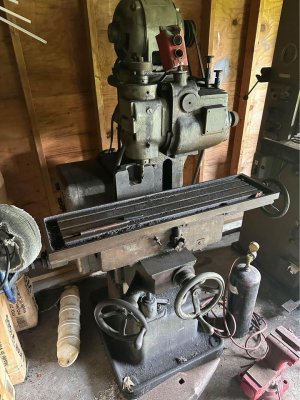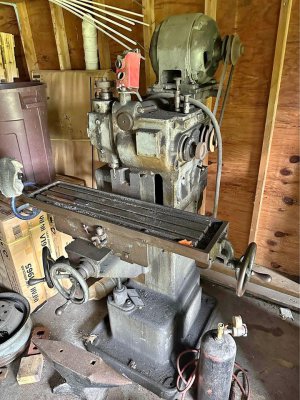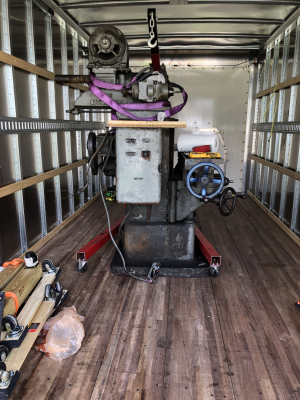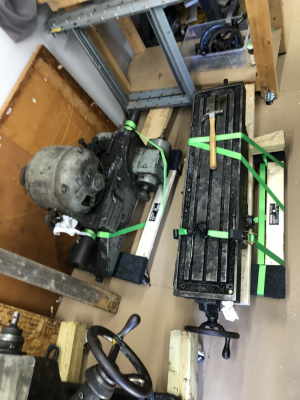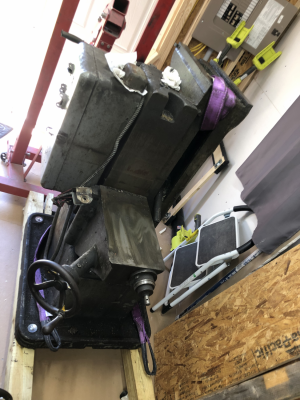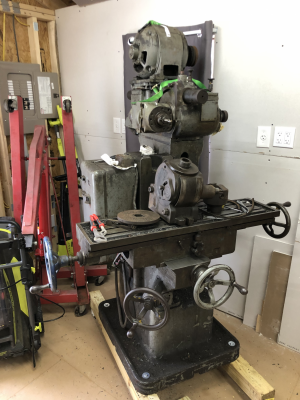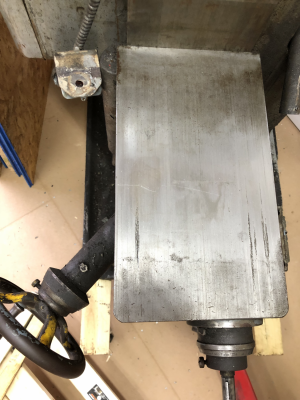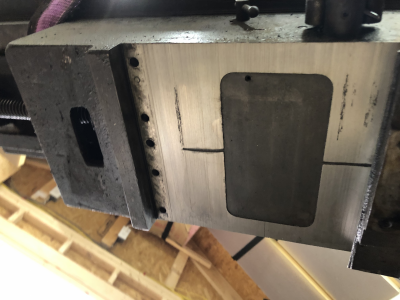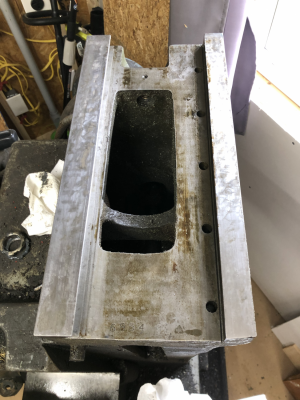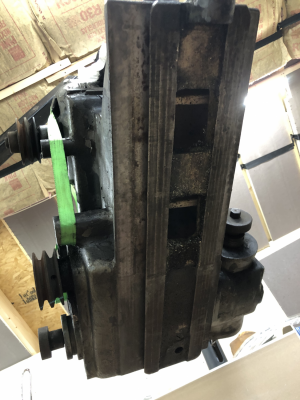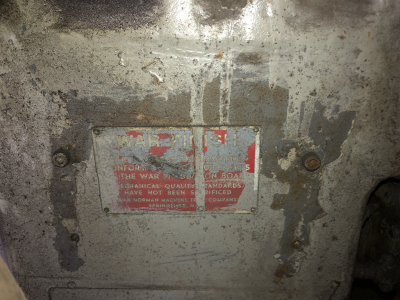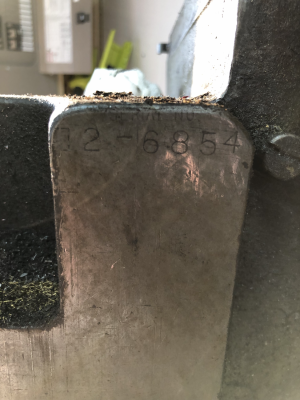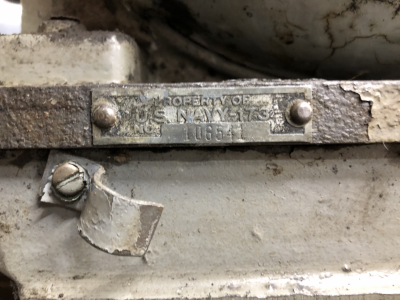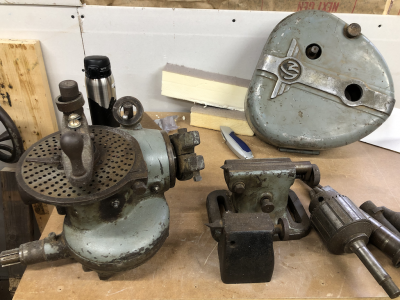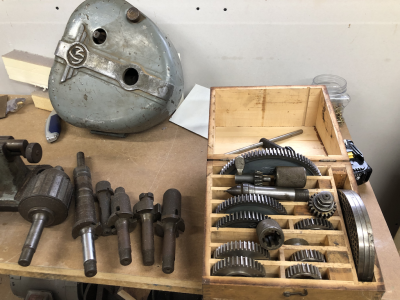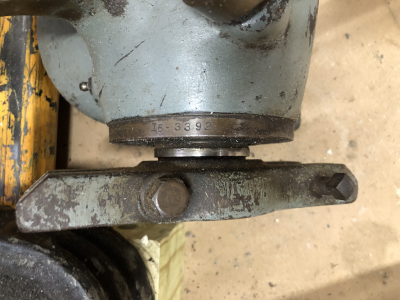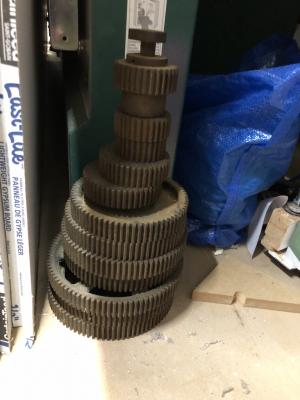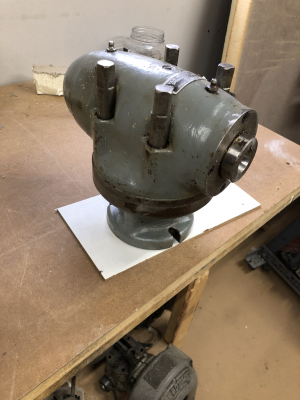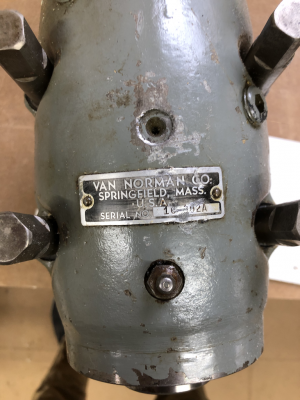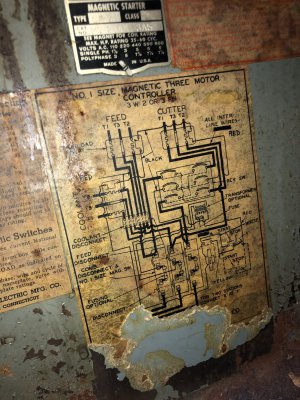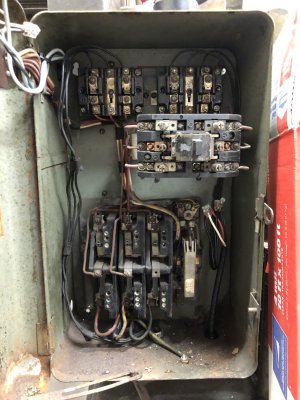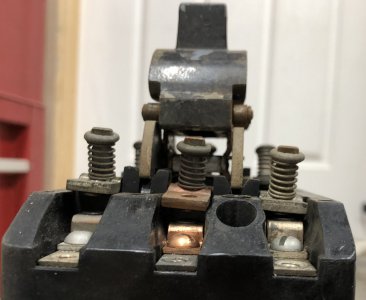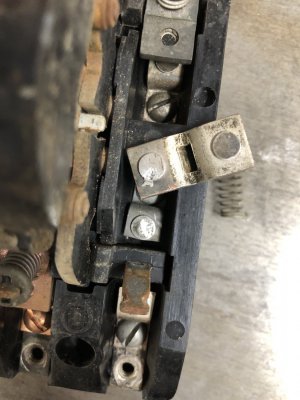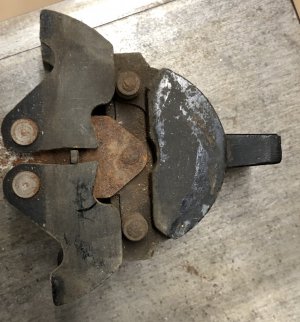I just arranged to buy my first mill, a WWII-era VN 12 in really good shape, I'm going back to pick it up in a couple weeks. I took with me today a large set, possibly complete, of VN C collets, 2 overarm support brackets, a 12" VN C arbor, and some horizontal cutters.
Questions I haven't found answers to anywhere else:
- What's the clamping range of a VN C collet? I know ER collets, for example, can each clamp within a range of sizes. I'm guessing due to the time period and design of them this may not be true of the C system, but I wanted to ask. This set at a quick run through appears to be a nearly complete set from 1/16" to 5/8" by 64ths (32 collets total, I'm going to clean them up and organize them tonight), and I'm unlikely ever to use a 17/64" etc. collet in the first place, but nice to have a full set in case.
- Will a 2-ton engine hoist's legs clear the base sufficiently to lift it/set it back down? The seller is going to borrow a friend's forklift to load it for me, but an engine hoist is my current option for unloading. Next option is to build a gantry crane like I've seen photos of here, but if I can get away without that, that'd be nice.
- I'm going to hunt down a dividing head eventually, but I've seen a couple versions in the VN literature. They made one that swiveled horizontally, and one that swiveled vertically - what's the difference? I see all the B&S copies and most of the other old iron versions I've seen online swivel vertically, but what are the differences of ability between them?
- I'd like to eventually find a universal head attachment, but I also envision making a new one - is there anyone out there who has one who has taken/would be willing to take measurements sufficient to make an exploded diagram?
Questions I haven't found answers to anywhere else:
- What's the clamping range of a VN C collet? I know ER collets, for example, can each clamp within a range of sizes. I'm guessing due to the time period and design of them this may not be true of the C system, but I wanted to ask. This set at a quick run through appears to be a nearly complete set from 1/16" to 5/8" by 64ths (32 collets total, I'm going to clean them up and organize them tonight), and I'm unlikely ever to use a 17/64" etc. collet in the first place, but nice to have a full set in case.
- Will a 2-ton engine hoist's legs clear the base sufficiently to lift it/set it back down? The seller is going to borrow a friend's forklift to load it for me, but an engine hoist is my current option for unloading. Next option is to build a gantry crane like I've seen photos of here, but if I can get away without that, that'd be nice.
- I'm going to hunt down a dividing head eventually, but I've seen a couple versions in the VN literature. They made one that swiveled horizontally, and one that swiveled vertically - what's the difference? I see all the B&S copies and most of the other old iron versions I've seen online swivel vertically, but what are the differences of ability between them?
- I'd like to eventually find a universal head attachment, but I also envision making a new one - is there anyone out there who has one who has taken/would be willing to take measurements sufficient to make an exploded diagram?


